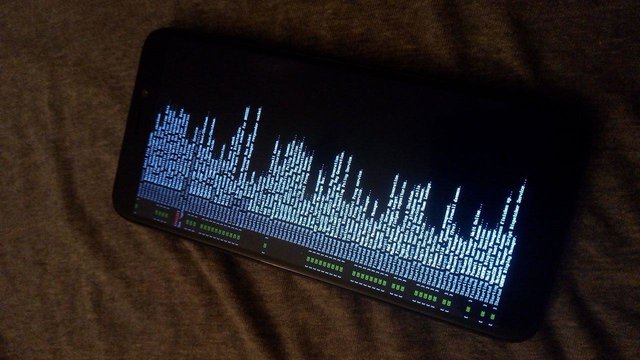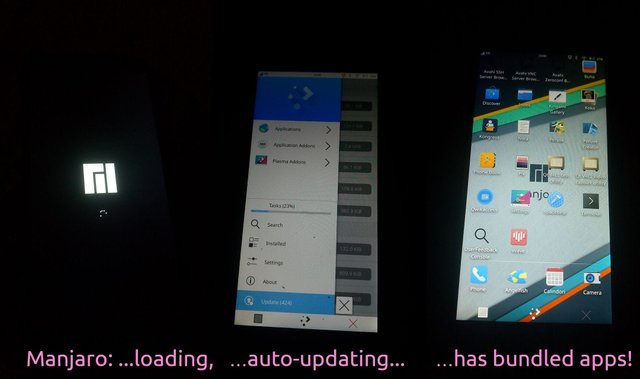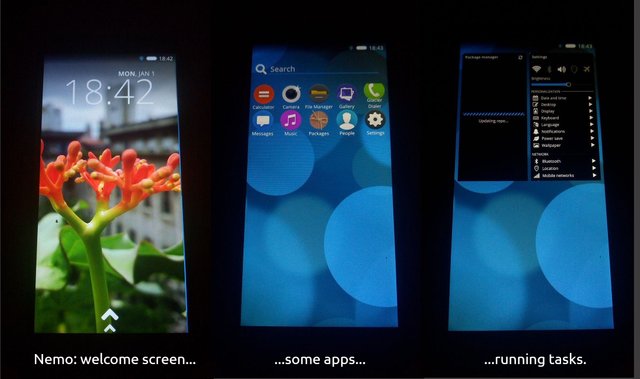Day 3 with thediarygame: PinePhone64 OS testing - part 2
Greetings, Steemit!
Today my day continues in the way of searching of a perfect OS for my phone. I do really hope that my post got "onboard" of the competition #thedairygame and #the100daysofsteam ships, as this is my personal experience and this is the stuff that I do the recent days; so literally IS my diary. With some technical details as I am geek & nerd.
And no, my dear readers, don't be afraid! I won't write stuff like "I walked to a shop to buy food" or "this is my morning selfie of today". I think this kind of posts are just a waste of time, both for people who make such posts, as well as for people who read them. Never going to happen with @sxiii! Only important & interesting, techy- stuff.
Today I also realized that it's not going to be few posts in length, rather than probably about 6 posts, or maybe week-long research, with few OS surveys every new day. At the end of this small research we will see what's possible to use for actual hardware hacker as good and main OS on PinePhone. So let's go!
Part 2 of finding the best OS for Pinephone
Numbering continues from the previous posts, showing the total number of OS checked out by me at the exact moment. In the end, I will do a sum-up post with all the statistics, so if you want only results, please come check by in 3-4 days. Otherwise, continue to read on! :)

4. Fedora ARM:
Install method: writing the image to microSD card.
I do really loved Fedora earlier times (somewhere around 2015 probably) on my desktops and laptops. I used it for a couple of years and I still think that it's one of the top-tier distros out there, as well as Fedora is being based on a lot of stuff like RHEL or CentOS. Which is really great!
Also, just recently there was great news from Lenovo, that they will certify all (or mostly?) of their hardware, including workstations and more, to support Fedora and Ubuntu officially. But, that goes for x86 platform... While the ARM platform is a different story.
So what I found:
Same lags as with Phosh in other distros.
- Wifi works, brightness works, but the interface is unstable and laggy from time to time.
- Out of the box, Fedora has near to 0 installed applications. Which is good and bad at the same moment. Also, it does not have any own boot animation.
- It's hard to navigate webpages in a built-in browser, for example.
I start to think that most of the lags are not due to the problems with the OSes, but rather a problematic "Gnome + Wayland" realization for ARM devices.
Fast-score: 4 out of 10.

5. Manjaro ARM:
Install method: writing the image to microSD card.
Manjaro is my main OS on most of the machines (90 to 95% of my computers are running it, including desktops, laptops and the Pine64 SoC). It works very nice everywhere as being the ArchLinux "with a human face" where you don't have to configure everything from scratch.
So I was really happy and afraid at the same time to test Manjaro on the Pinephone, especially knowing that it features Plasma, one of the environments that I basically never use (apart from testing). But at the moment, it seems, that for ARM Phones GNOME (Phosh) environment is even worse in terms of not being ready for the end-users, glitchy and unstable (at least with my Pinephone and on distros that I've tested before that). So I am really interested in what Manjaro can offer me here! Can it be one, universal OS everywhere? Let's see!
So, my first thoughts:
- It has wifi that works! Brightness also works OOTB.
- Is requested me to download 565 mb of updates right after connecting to Wifi and it seems the only OS that actually updated correctly and automatically right after installation success.
- It has some apps pre-installed! Finally, something other than Sailfish OS that has some apps preinstalled! Great.
After quite a while the Wifi started to show-off as disconnecting and reconnecting. But, frankly speaking, this is happened to me on other devices as well, including different phones and laptops (which make me think that AirTies are not perfect devices for mesh wifi).
But as time goes by with the Manjaro... Some more issues arose. It seems to stuck during updating at somewhere on 60%, and I had to hard reboot it. After which, guess what? Yeah, the phone didn't boot at all, hanging on 30~ seconds boot screen. Nothing happens afterward. I have to do a second-try from eMMC later on. I still seriously consider Manjaro along with SailfishOS at this moment.
Fast-score: 7.5 out of 10 (but needs a test on eMMC).

sorry for out of focus photo, but there's nothing to see anyway :D
6. Maemo Leste:
Maemo is a trimmed-down version of Debian for mobile devices, originally a collaboration between Nokia and many open source projects (the Maemo community) before Nokia abandoned it. The community now takes full responsibility in developing fully open-source Maemo for a variety of mobile devices.
The new version Maemo 7 "Leste" is an ARM64 port of Devuan (Debian without systemd) and runs the mainline Linux kernel. The default user interface stack is Hildon, Xorg, Matchbox WM, and GTK.
My problem with Maemo was that the keyboard (to enter wifi passwords, etc.) just doesn't appear. Probably most of the Maemo devices had a built-in keyboard; and Pinephone obviously doesn't :) So my testing stuck in here, as I don't have USB-C->USB-A female adapter. Also, I've noticed some visual lags with the main screen and while navigating via system menus.
Fast-score: 5.5 out of 10 (but needs more testing!).

7. Nemo Mobile
Interesting OS, being the fully opensource fork of Sailfish OS.
This OS also "features" Lack of apps, but in general - interesting. If the community will continue to develop this project I think it might grow to something nice in the near future. But at the moment, needs further development.
Fast-score: 6.5 out of 10.
As always, I want to thank the creators of the competition (@steemitblog and @steemcurator01) as well as those who shared the links and info about this competition (@vipnata and @ladyzarulem). My goal of regular posting to steemit is back! :)
So, that's all folks, for my today's testing, and I'm going to continue it for couple of days.
I hope you like the topic and experiences :)
See you in the next one,
D (@sxiii) from O.
да, на Манджаро при блице ч/з вай-фай можно внезапно потерять партию
Ну у меня на самом деле это проблема с роутерами AirTies. На других ОС, включая андроид, Ubuntu, и даже WinXP на древних буках, сеть точно также отваливается иногда. Просто современные вафлекарты, как мне кажется, имеют большие допустимые задержки и авто-реконнектиться пытаются дольше. А вот на картах постарше проблема - жесть.
мне с десяток партий порвало и в турнирах, и так, а там жеж 20сек дисконнекта - типа юзер психанул и сдался. 1 дядька тољко нормаљный - ничью зафиксировал, остаљные недобитые возрадовались
Ну тут х3. Для таких дел стабильных кабель можно. Или купить нормальный wi-fi адаптер в ноут, совместимый надёжный, цена вопроса 10 $ с али.
да, на кабеле всё стабиљно, всё собираюсь тут движуху хотя бы в крейзихаус начать, правильного шахматного сайта нет однако, куда народ на регистрацию зазывать: или выбор игр малењкий, или контрољ тормознутый